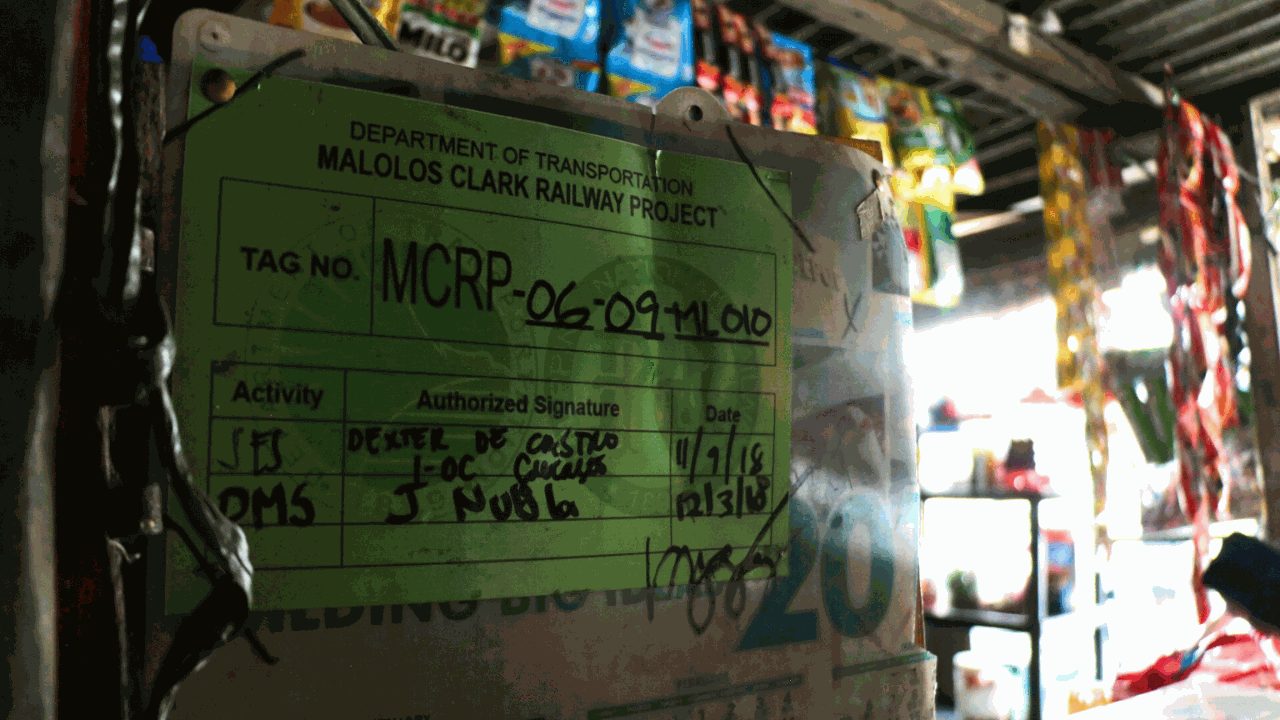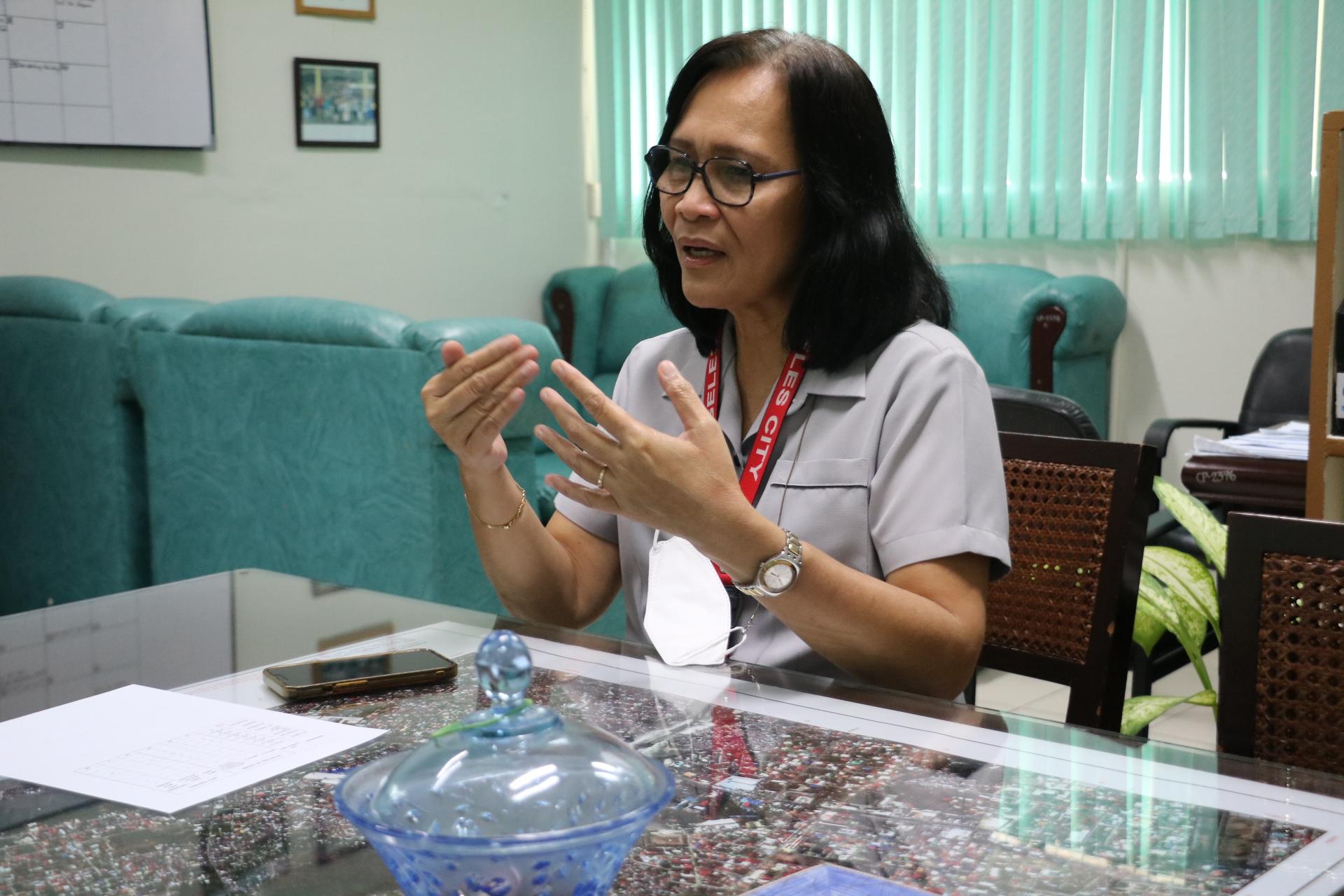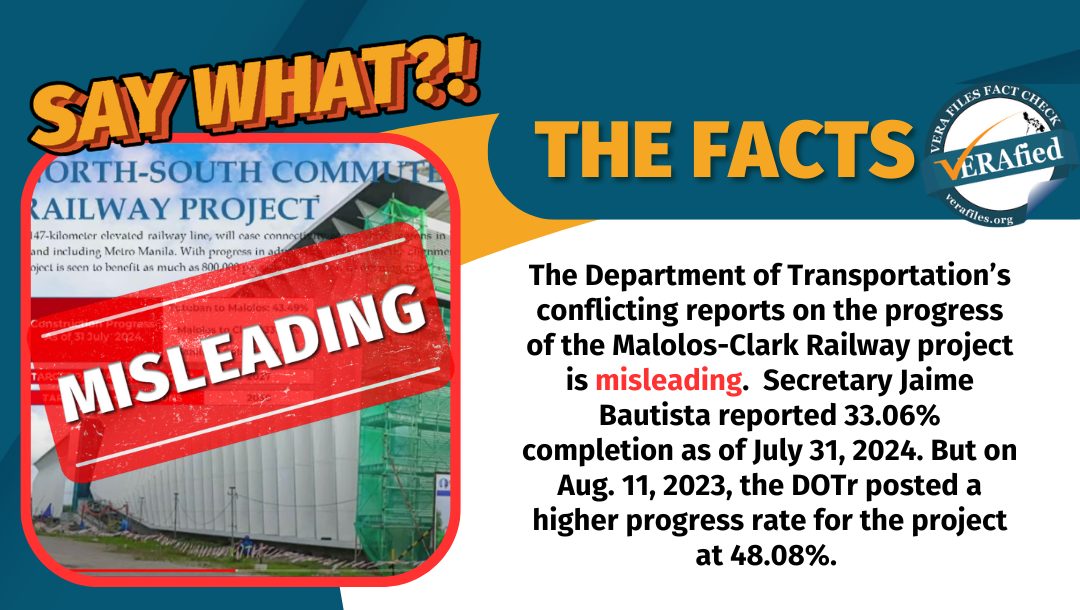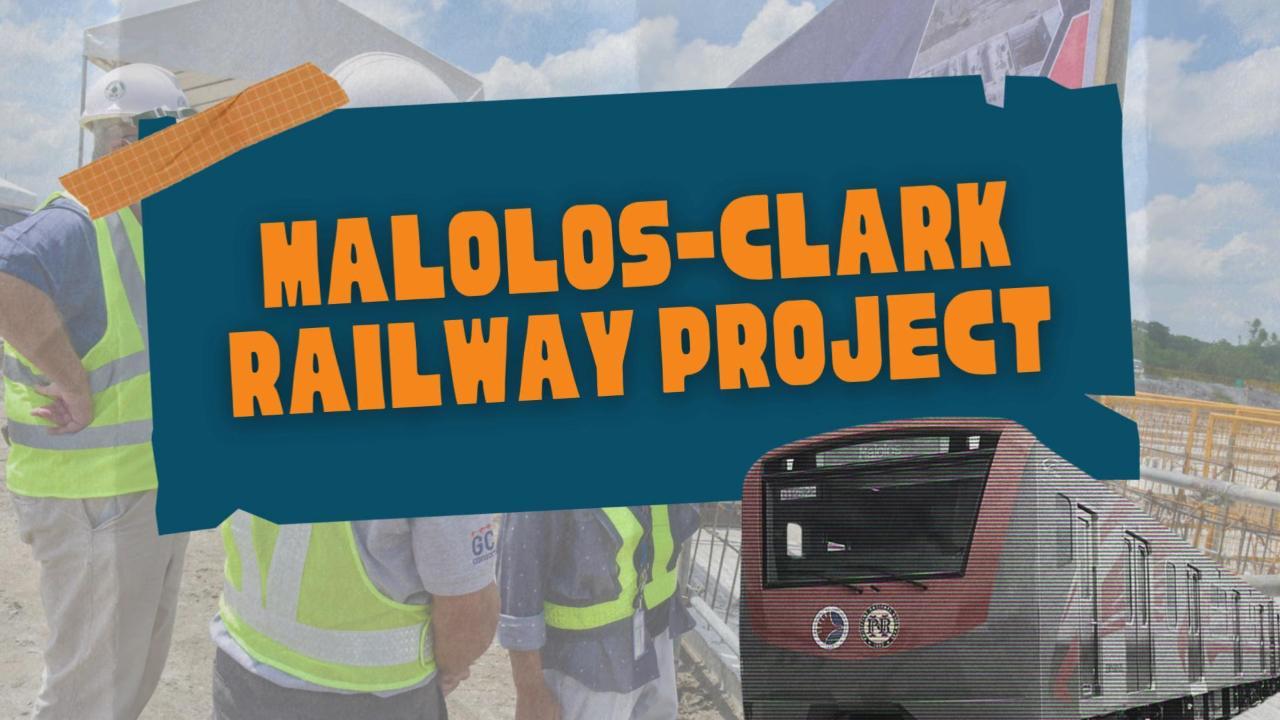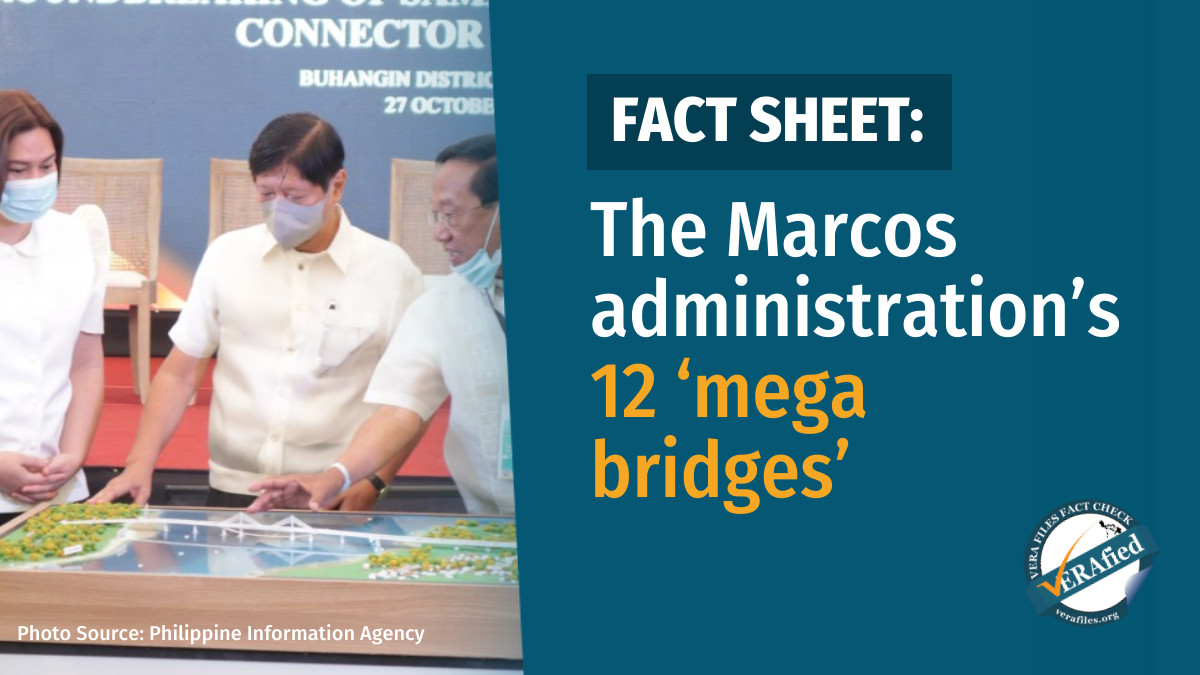(First of two parts)
Rosa Lebosana is ready to leave the home she built brick by brick for the promise of a titled house and lot as part of the Philippine government’s relocation efforts for the Malolos-Clark Railway Project (MCRP).

“Mahirap din kayang maghintay… May mga plano ka pang gagawin hindi mo na magawa sa kakahintay kung kailan mangyayari ‘yon,” said Lebosana, 41, who resides in Barangay Maimpis in San Fernando City, Pampanga.
(It’s hard to keep waiting… You have plans you want to make but you can’t because you’re waiting when that day comes.)
For her, moving to Barangay Panipuan, one of the three National Housing Authority (NHA)-approved relocation sites around 9.7 kilometers away from Barangay Maimpis, would be better for her family.
“Mas maganda rin naman doon kasi mas malapit doon sa trabaho ng asawa ko sa Panipuan,” she said. “Wala ka nang iisipin, bahay mo na, eh. Hindi ka na mag-alanganin kung may ipagawa ka o anuman.”
(It is better there because it is nearer to my husband’s workplace in Panipuan. You don’t have any more worries because that home would be ours. We won’t have to hesitate if we want to do some renovations or things like that.)
Once relocated, the Lebosanas would enter into a housing loan with the NHA, granting them a land title from the local government.
When that would happen remains uncertain for Lebosana as the 53-kilometer MCRP segment has been delayed by at least four more years or until 2028 from its original full operation timeline in 2024.
Boasting a shorter travel time between the capital city of Bulacan and Clark International Airport in Pampanga, the MCRP is intended to complete the larger connectivity project of the 163-kilometer North-South Commuter Railway (NSCR) that extends to Calamba, Laguna.
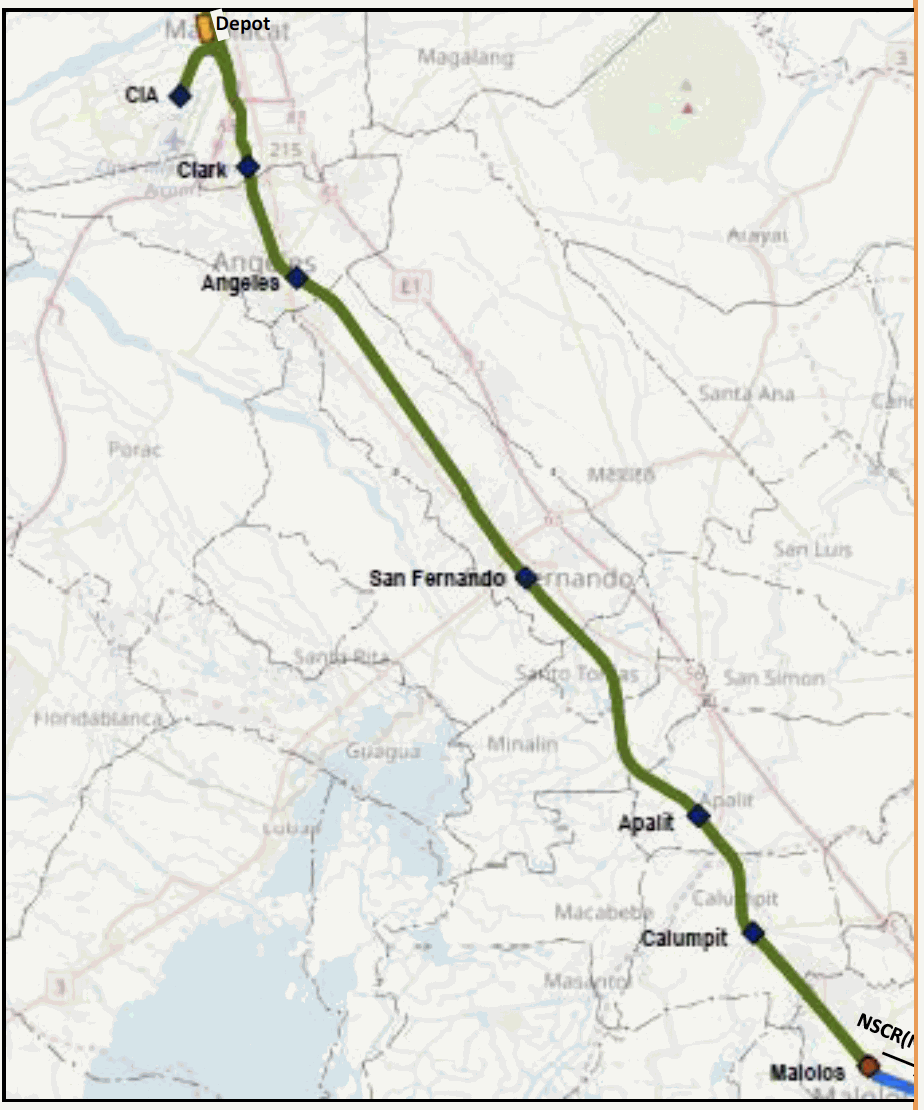
Lebosana, her husband and their three children have lived in a 50-square-meter house since 2003. She said the house was surveyed and tagged on Nov. 9, 2018, more than a year after the Duterte administration greenlit the MCRP.
Six years after the first tagging, Lebosana said the Department of Transportation (DOTr) has not followed through with its promise.
“Magtatanong kami sa mga lider, wala rin naman silang masagot… Maging ready na lang din kasi alam mo naman na paaalisin,” she said.
(We would ask the leaders but they do not have an answer as well… We will just be ready because we know we have to leave.)
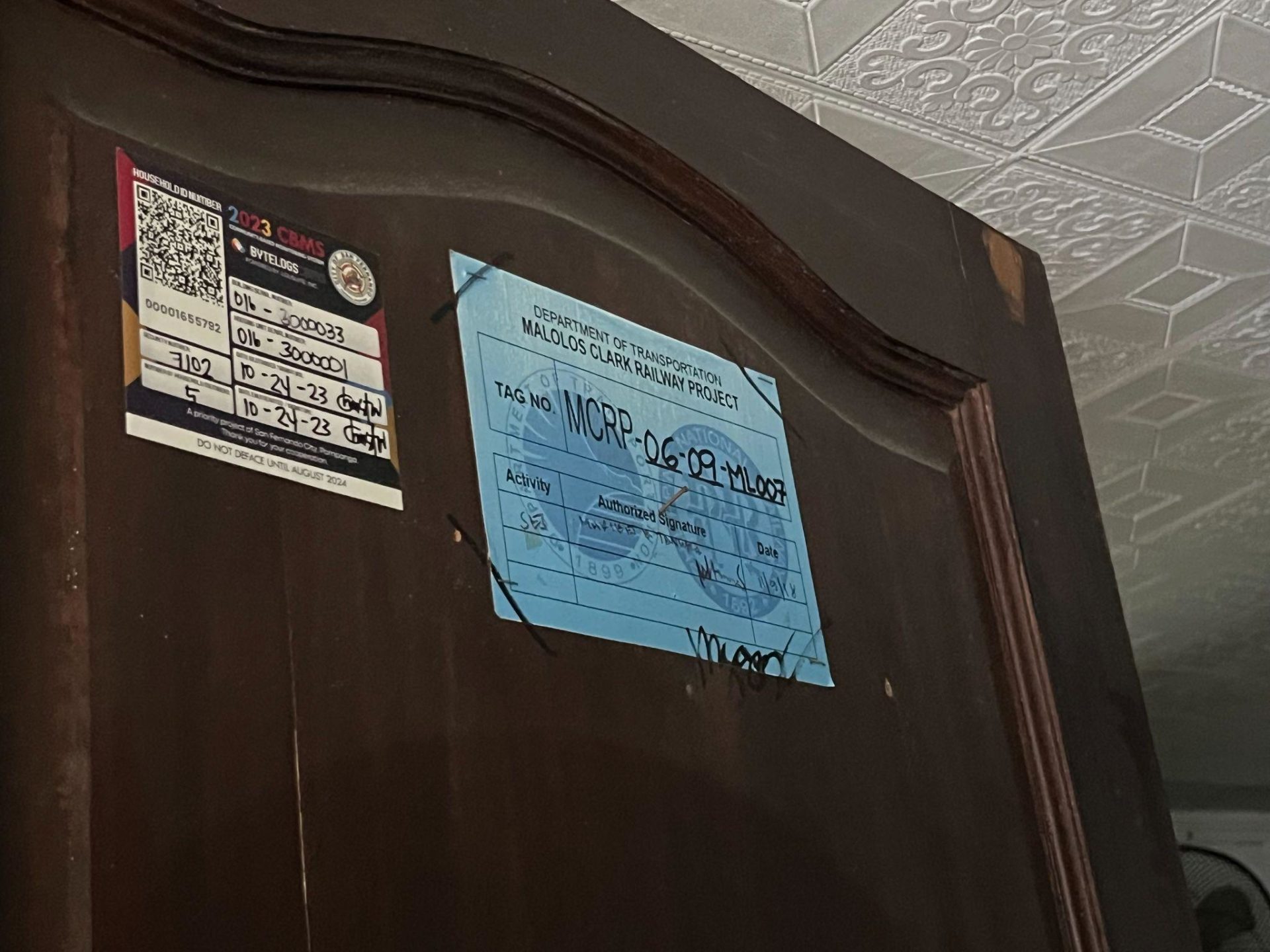
Lebosana’s house sits on a portion of the 30-meter right-of-way (ROW) of the MCRP in San Fernando City, where railway construction is lagging behind at 28.97% as of August 2024.
Inaccurate parcellary or lot boundary plans in the initial feasibility studies for the MCRP led to a domino of ROW and land acquisition issues on the part of the DOTr.
“Part of our land acquisition process is getting the parcellary survey. Back in 2018, 2019, we did a lot of surveys pero [but] there were errors in the data tapos mas nahirapan pa kami (then it became more difficult) to do field work and research when the pandemic hit,” said NSCR-Extension Project Manager Narciso Preclaro Jr. in an interview with VERA Files on Oct. 4.
In its Official Development Assistance portfolio review published last Aug. 8, the National Economic and Development Authority (NEDA) pointed to the “prolonged review and approval” of parcellary plans submitted by consultants and subconsultants that “did not meet set standards” as the “root cause” for the delays in MCRP.
The MCRP’s alignment makes use of the “legacy” ROW of the Philippine National Railways (PNR) which is approximately 10 to 20 meters. Based on the recommendation of the Japan International Cooperation Agency (JICA) Design Team, the MCRP should have a consistent 30-meter ROW, drawing 15 meters on each side from the current center line.
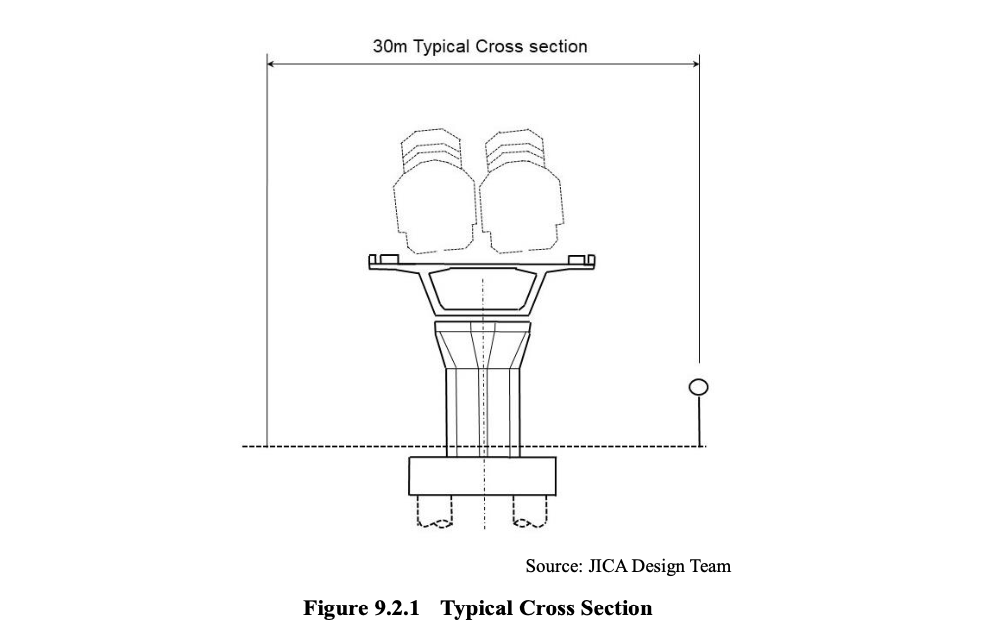
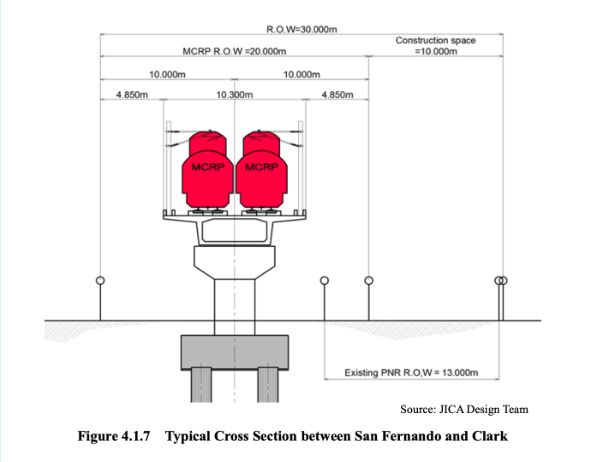
This would mean that additional land acquisition is required to fulfill the MCRP’s 30-meter ROW especially in areas with dense residential structures, the JICA Design Team wrote in its draft final report published in October 2018.
“Their [Italian-Thai Development] slow progress rate is because of a lack of right of way. For N-03, the workable areas in Angeles, nasa 30% pa lang (was only at 30%) out of the supposed 100%,” said Preclaro.
When “normal operations” resumed in 2022, he said, “that’s when we realized that there were discrepancies on the ground and what’s on the [parcellary] report.” They then had to revalidate the results and make necessary rectifications.
MCRP’s Contract Package No. 03, which covers portions of Angeles and San Fernando, suffers the brunt of this problem.
Preclaro pointed out that the biggest challenge is that this contract package covers both San Fernando and Angeles, where there is a “high concentration” of informal settler families (ISFs) along the PNR ROW.
Without accurate and revalidated parcellary surveys, the DOTr cannot make lot acquisition offers and provide workable areas for its contractors. Workable areas must be clear, collected and consolidated for construction companies to do any “meaningful work.”
Ultimately, the DOTr yields to the NHA, which creates and validates its own list of ISFs entitled for relocation for the MCRP.
“Hindi kami makabili ng lupa or hindi namin maayos ‘yung pagbili ‘pag hati-hati… pag-identify no’ng mga kailangang bilhin if we don’t have solid data,” Preclaro said.
(We cannot acquire land or streamline buying these plots of land if these are not consolidated … we cannot identify what else we need to buy if we don’t have solid data.)
As of October 2024, the DOTr has “successfully acquired” 31 parcels of land across the alignment. This totals to 4.9 hectares out of the estimated 45.5 hectares of land acquisition for the project.
In a letter to VERA Files on Oct. 24, the agency said these properties are “aside from the compensation given to structure owners in PNR properties in the form of replacement costs.”
‘Quick’ feasibility study skips environmental, social scrutiny
A JICA-funded master planning activity in 2014 solidified the prospect of a project interconnecting Central Luzon, the National Capital Region and Region 4A-CALABARZON, said DOTr Planning and Project Development Undersecretary Timothy John Batan in an interview with VERA Files on Oct. 18.
The concept of a mass transportation system traversing Metro Manila to Central and Northern Luzon and back was first introduced in 1994 under the administration of then-president Fidel V. Ramos.
Batan said the government asked the Japan Overseas Infrastructure Investment Corporation for Transport and Urban Development (JOIN) in 2016 to do a partial feasibility study for the MCRP since they can “mobilize resources” faster than China, which also offered to do it.
The study, which was completed in July 2017, was made through a grant from JOIN, meaning, it is free-of-charge.
JOIN, established in October 2014, is a public-private fund of the Japanese government that “expedites Japanese enterprises’ entry” into foreign markets from the “early stages.” It provides “hands-on” support to infrastructure projects participated by Japanese companies.
Part of its decision-making process is making sure target investments satisfy a four-point criteria. Among these is for a potential investment’s implementation to give “due consideration” of its environmental and social impact.
JOIN’s investment decisions should also have a “positive impact” and ensure the smooth operation of the potential investment project they will be supporting, based on the same criteria.
Its interest in the MCRP stemmed from its earlier inked agreement with the Philippine government to develop the New Clark City (NCC) with the Bases Conversion and Development Authority (BCDA), according to Batan.
Inquirer.net reported in 2019 that the P607-billion NCC has threatened to displace an Aeta tribe in Capas, Tarlac. The Asian Development Bank (ADB), JOIN and Singapore’s Surbana Jurong master planned the NCC, dubbed as the country’s first “disaster-resilient” city.
“The priority then was we need to do something fast so that we can get NEDA Board Approval… to unlock project development resources from JICA,” Batan explained.
After accomplishing the partial feasibility study, JOIN was already hands off on further studies done for MCRP. In July 2024, The Asahi Shimbun reported that JOIN had drawn the ire of the Japanese public after losing ¥79.92 billion (US$500 million) in fiscal year 2023 for investment “failures” in Myanmar and Brazil.
In the 2018 draft final report for the MCRP, the JICA Design Team noted that the JOIN study was limited to information gathering and surveys and “did not include the examination of the environmental and social considerations” to fulfill the “desire” of the government to launch the railway within the term of former president Rodrigo Duterte.
One of its primary sources for parcellary data is the Land Registration Authority that details the titles, land areas and technical descriptions of properties.
Batan admitted that the country’s current maps are “inaccurate,” but are validated and updated for increased accuracy on an “as-needed” basis, such as when there are big infrastructure projects like the MCRP.
On Nov. 9, 2018, the NEDA-Investment Coordination Committee (NEDA-ICC) approved the change in scope and increased costs of the NSCR system, including the MCRP’s change to a double-track train system from a proposed single-track configuration.
When asked if it is common practice to fast-track feasibility studies, Batan cited the MRT-4, which also followed a “quick feasibility study” to get approval from the NEDA-ICC. The committee has not yet re-approved the MRT-4 and no funding source has been identified for the project.
“What level of detail should be in a feasibility study before getting NEDA approval is not set in stone,” Batan stressed, adding that it is the same for environmental impact statements.
For this reason, the DOTr is creating a Transport Project Preparation Guidelines (TPPG) that would specify the level of detail of a feasibility study for it to be considered “investment-grade” for the NEDA-ICC.
At present, the NEDA-ICC uses general guidelines to evaluate project proposals worth $2.5 billion or more, and determine if these are worthy investments.
The TPPG would once and for all establish clear standards on transportation projects, Batan explained.
According to Preclaro, the DOTr referred to the JICA team’s 2018 design to bid out the contracts the following year – all of which were signed and awarded in 2020.
The agency secured two funding sources for the MCRP: $2.75 billion from the ADB for the civil works, including the viaducts, stations, tunnels and depot buildings, and another $2 billion from the JICA for tracks, depot equipment, power supply and electrification, signaling and telecommunication systems, procurement of rolling stock and consulting services.
JICA’s design team did a supplemental feasibility study, which led to MCRP’s detailed engineering design and its resettlement action plan. Six Japanese engineering firms were involved in the team.
In its updated environmental impact assessment, JICA wrote that the PNR ROW was chosen over the North Luzon Expressway ROW because it has “less construction delay factors” such as affected trees. JICA also selected an elevated track structure for the MCRP considering the prominence of flooding in Bulacan and Pampanga during the rainy season and the alignment’s potential interference with existing roads in the provinces.
VERA Files has reached out to JOIN regarding their work on the MCRP but has yet to receive a response as of publishing. The team also contacted JICA Philippines, who previously said the “topic of the matter must be responded with care,” hence, they forwarded our queries to their Japan headquarters.
Four of the firms made it into the Greater Capital Railway (GCR), a consortium the DOTr hired on Sept. 2, 2019 as general consultant for the NSCR. GCR is tasked to review several works of the JICA Design Team such as the MCRP’s detailed designs and environmental and social impact assessments. It has the overall responsibility to supervise, monitor and report on the environmental management plan (EMP) and environmental monitoring plan (EMoP) implementation.
The Japanese consulting firms in this joint venture are Oriental Consultants Global Co., Ltd.; Katahira and Engineers International; Tonichi Engineering Consultants, Inc.; Pacific Consultants Co., Ltd. – which were part of the JICA design team – and Nippon Koei. Six Philippine engineering consulting firms also formed part of the joint venture: DCCD Engineering Corporation; Engineering and Development Corporation; J.F. Cancio & Associates; Oriental Consultants Philippines, Inc.; Schema Konsult, Inc., and TCGI Engineers.
Not enough boots on the ground
For Batan, the “real root cause” of the MCRP delays is the lack of manpower within the DOTr to validate the erroneous parcellary maps.

JICA’s census survey for the MCRP in 2018 recorded only a total of 1,416 potentially affected households. Of this number, the magnitude of ISFs affected increased by about 108.70% when compared to NHA’s data in 2024.
“Just imagine the burden if you are one person handling 200 parcels,” he said.
The DOTr currently has 48 employees in its ROW and Site Acquisition (ROWSA) team for the MCRP. It seeks to hire 89 more by year end to hit their target head count of 137 ROWSA employees for the project.
The ROWSA team is in charge of identifying every parcel of land, its ownership and the rights and entitlements of project-affected persons (PAPs) based on the DOTr Department Order No. 2018-005. It is also responsible for determining the exact amount or type of compensation for PAPs, allowing the DOTr to enter into negotiations to secure a clear land title and access to the site or parcel of land.
Ideally, Batan explained, parcel polygons should fit each other like puzzle pieces. However, the reality is that informal settler structures sometimes overlap, or that boundaries of structures leave gaps between them that create open polygons.
This is why the DOTr needed people on-ground to validate and confirm the lots and structures affected by the MCRP’s alignment, which the JOIN feasibility study initially provided.
“Hindi mo naman pwede tanggalin ‘yung (You cannot skip) validation. Neither can you remove errors,” said Batan.
In the resettlement action plan (RAP) drafted by JICA, such validation should have lasted for only four months. The RAP took into consideration circumstances that could have affected the final number of project-affected persons.
Several interview call backs were held for people who refused to be interviewed, were absent during the surveys or for titled land owners who thought that only ISFs will be affected by the MCRP.
Less than 5% of the total ISFs affected by the MCRP have been verified and resettled as of September 2024. In Pampanga alone, out of 1,936 ISFs, only 112 have been relocated.
What is constant in the RAP, Batan pointed out, is the identification of entitlements for the different PAPs, businesses and even trees.
“I’m telling you, the one thing that could speed all of these things up is head count,” he added, noting the need for a huge budget to improve the accuracy of the country’s parcellary maps.
Batan, who has been with the transportation department for nine years, believes that a proportionate number of people on-ground is the “single most important thing for the entire infrastructure portfolio.”
This story was produced with support of the Internews Earth Journalism Network.
